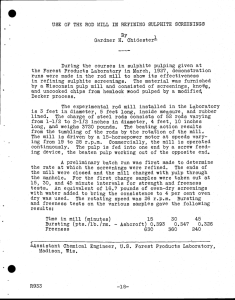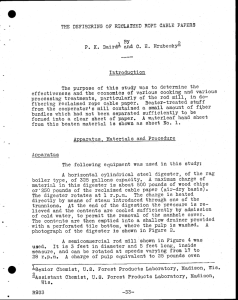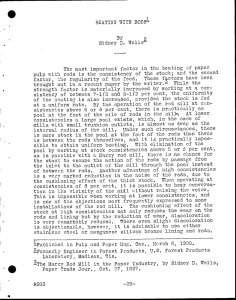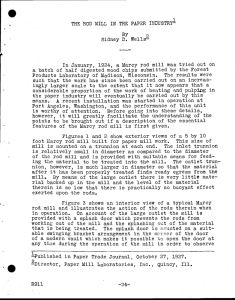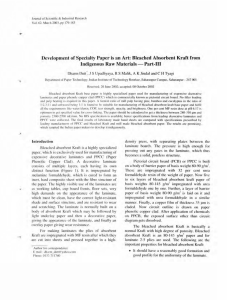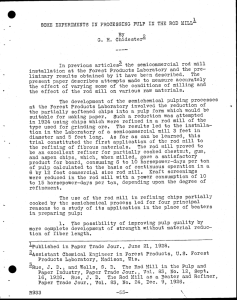mill
advertisement
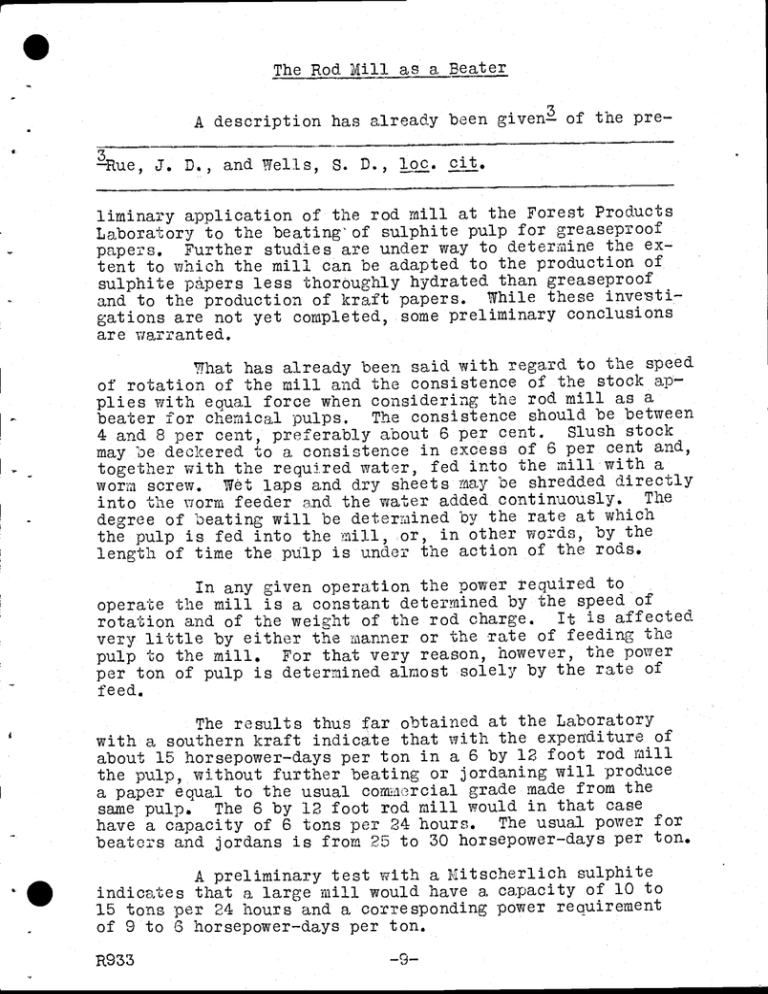
The Rod Mill as a Beater A description has already been of the pre— J. D., and Wells, S. D., liminary application of the rod. mill at the Forest Products of suiphite pulp for greaseproof Laboratory to the under way to determine the exFurther studies papers. the mill can be adapted to the production tent to suiphite papers less thoroughly hydrated than greaseproof and. to the production of kraft papers. While these gations are not yet completed, some preliminary conclusions are warranted. has already been said. with regard to the speed of rotation of the mill and the consistence of the stock plies with equal force when considering the rod mlii as a The consistence should be between beater for chemical puips. Slush stock 4 and. 8 per cent; preferably about 6 per cent. deckered. to a consistence in excess of 6 per cent and, may together with the required water, fed. into the millwith a worm screw. Wet laps and dry sheets may be shredded. directly into the worm feeder and the water adde& continuously. The degree of beating will be determined by the rate at which the pulp is fed. into the mill, or, in other words, by the is under the action of the rods. length of time the In any given operation the power i'equired to operate the mill is a constant determined by the speed. of rotation and of the weight of the rod charge. It is affected very little by either the manner or the rate of feeding the pulp to the mill. For that very reason, however, the power per ton of pulp is determined almost solely by the rate of feed. The results thus far obtained at the Laboratory with a southern kraft indicate that with the expeflditure of about 15 horsepower—days per ton in a 6 by 12 foot rod mill the pulp, without further beating or jordaning will produce grade made from the a paper equal to the usual The 6 by 12 foot rod mill would in that case same pulp. The usual power for have a capacity of 6 tons per 24 hours. beaters and jordans is from 25 to 30 horsepower—days per ton. A preliminary test with a Mitscherlich suiphite indicates that a large mill would have a capacity of 10 to 15 tons per 24 hours and a corresponding power requirement of 9 to 6 horsepower—days per ton. R933 —9— of the Räd Mill. 1; The indications which our, preliminary. invèstigatiQns' give .of the potential. valueS of the rod mill., as. applied to' refining knots ant screenings and to bsting have.been discussed here in rather 'general terms. As bur. investigatiQns prooóed, the indications may be modified'or they, may be more fully subStantiated. 'X: any case it is our. hope that the infarmation now available will stimulate care—. investigation oxi the part 'of the superintendents and that you may be induced tà study the 'application of the rod mill' to. your. individual 'problems. You 'may be sure that 'the Forest Products Laboratory. will gladly. oooperate with'you if you :" 4egire 11933 to test its rnertts in your mills.' ' ' —10—,' ' ' ,






